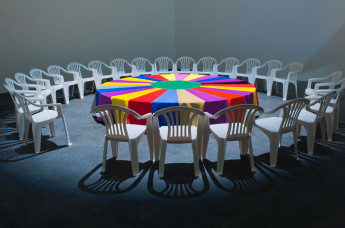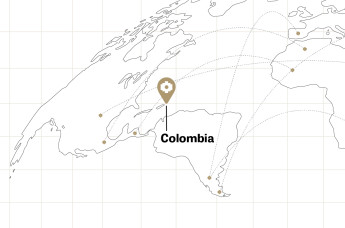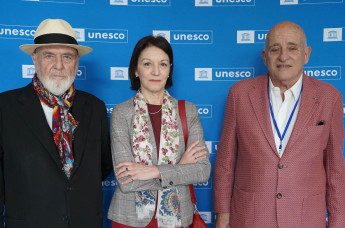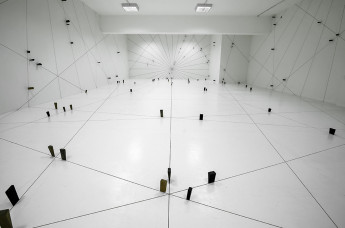The second edition of BIENALSUR 2019, Argentina's contemporary art cultural event for the world, opens at the Visual Arts Center Museo del Barro and at the Miglorisi Foundation on Saturday, July 6 at 7 p.m. with works by Argentine artists Patricia Hakim and Edgardo Rudnitzky. In this way, the biennial reaches another point in South America in its unique cartography that will continue to unfold until November with exhibitions by 400 artists in more than 100 venues - with which it works jointly and collaboratively - in 43 cities in twenty countries.
The International Biennial of Contemporary Art of South America opens the exhibition "QR: between the ancestral and the future" by Patricia Hakim at the Visual Arts Center Museo del Barro in Asunción on July 6 at 7 p.m. The exhibition combines ancestral artisan techniques with new technologies. The sound installation "Border music" by Edgardo Rudnitzky, which reflects on migrations, exiles and transits will be inaugurated at the Migliorisi Foundation.
Hakim's proposal, which can be seen until August 10, is an invitation to scan a QR code for visitors to find, in a surprise move, a beautiful video of artisans working with ancestral techniques. An idea of uniting worlds which apparently are opposed, recovering and broadening the senses of craftsmanship, art and technology by tensing diverse productive contrasts: connecting ancestral techniques and its artisans in a technological way and inversely and simultaneously exhibiting current technologies in a handcrafted way.
This approach generates a dislocation and an estrangement that questions the place of the artist, the producer and of the hybridization-fusion of the role of the artist/curator. Accordingly, the works and the curatorship aim to highlight the way in which different techniques make and represent their own time and place. In other words, art is proposed as a collective, experimental and multidisciplinary practice destined to act, expand and give other senses to its own field.
Edgardo Rudnitzky's sound installation "Border music" is a slim, long metal structure in which rustic machines from old music boxes move their gears powered by a small electric motor giving rise to random, unexpected sounds.
In this piece, materiality and its sonority establish the "border" between one side of space and the other, between one side and the other side of "comfort", and install the question of migrations, exiles, transits and their tensions.




